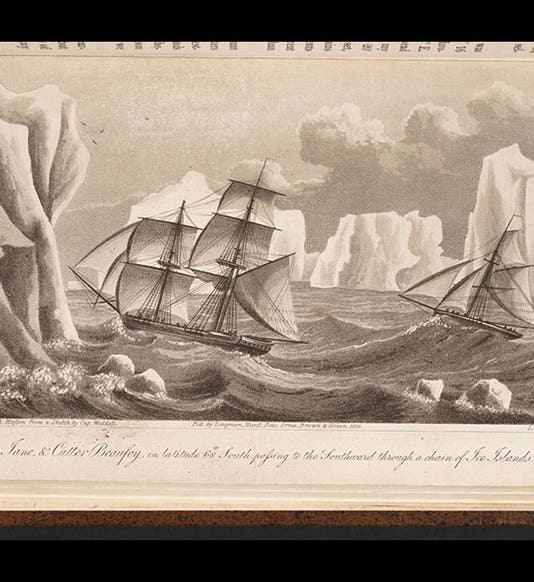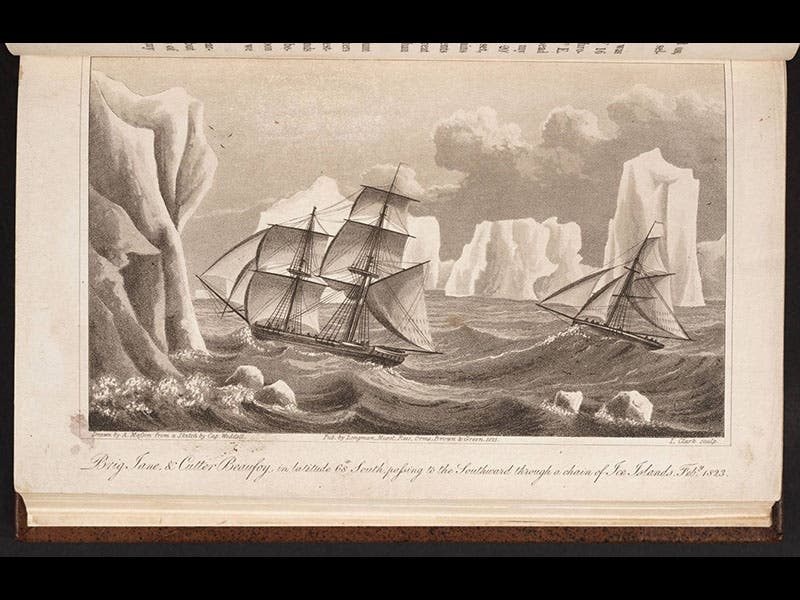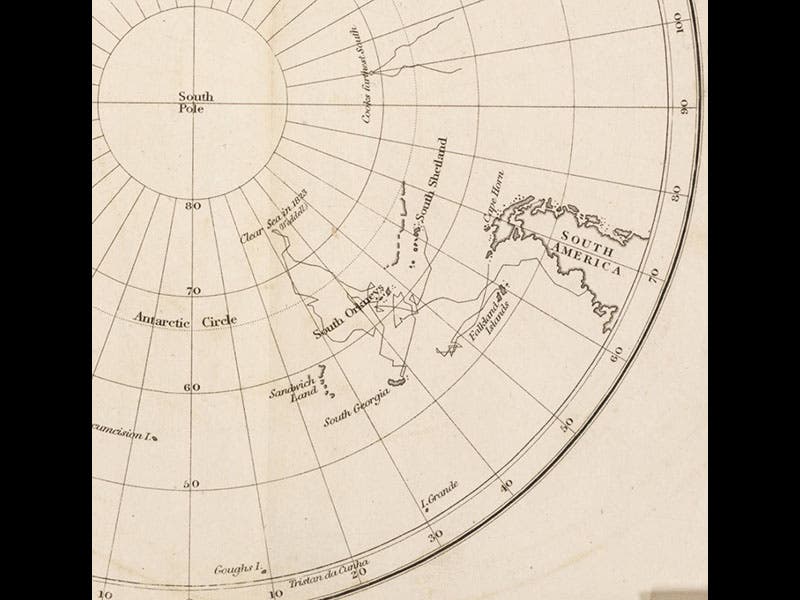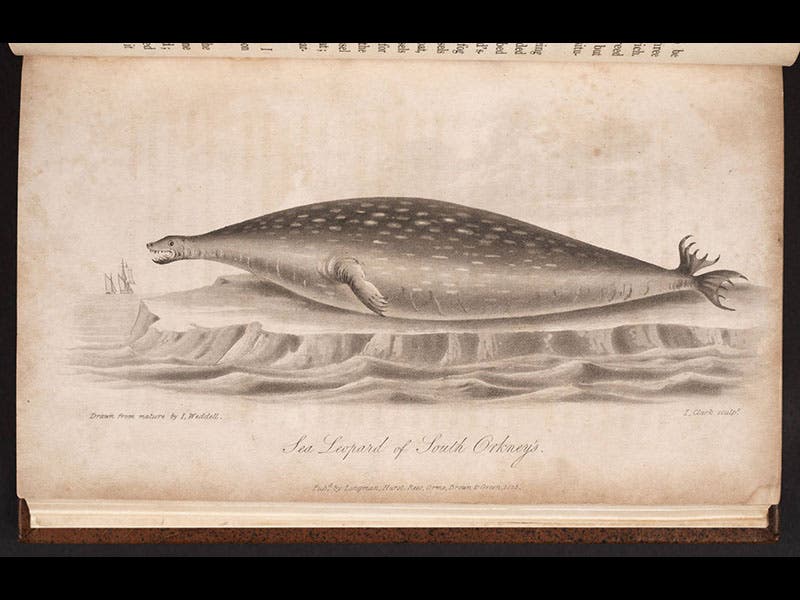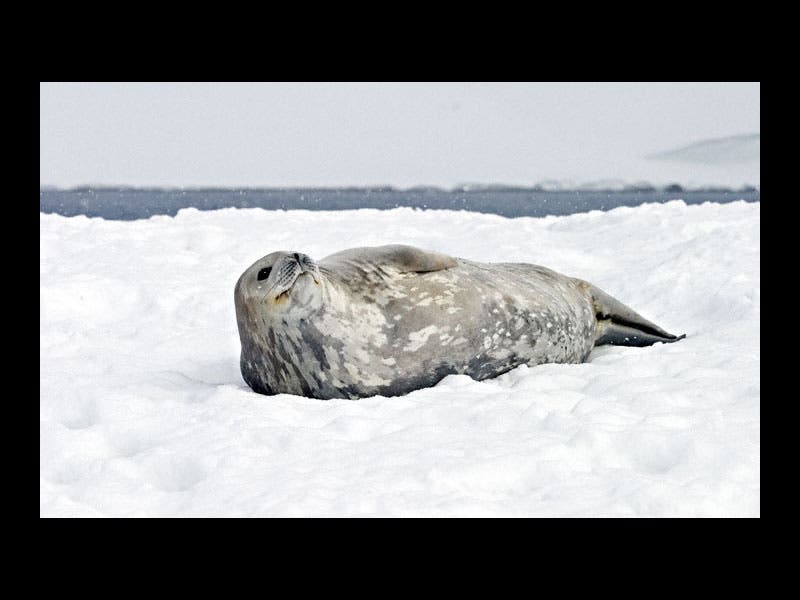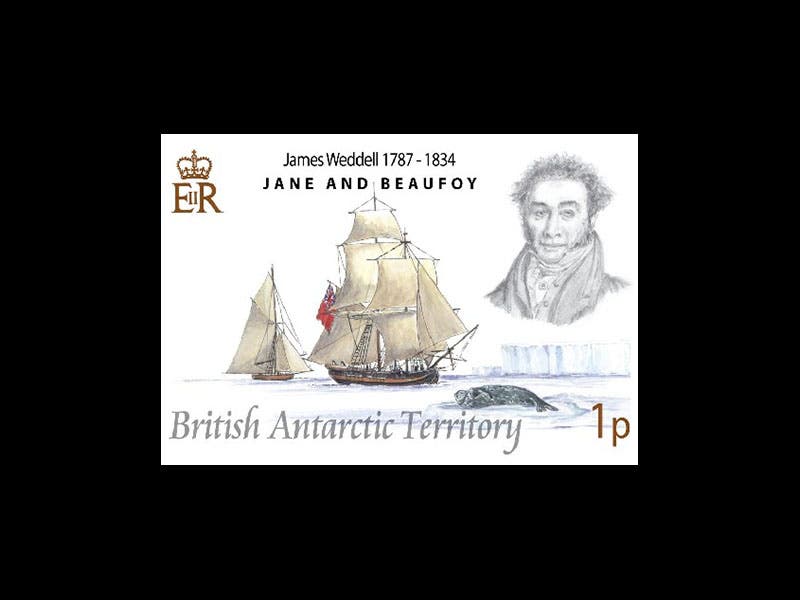Scientist of the Day - James Weddell
James Weddell, a British sealer and ship's captain, was born Aug. 24, 1787. Weddell was an odd sealer, in that he liked to explore and make scientific observations while looking for new sealing grounds, and since his domain was the southern ocean, there was plenty of unexplored territory to examine. He made his first voyage to the Antarctic in a brig named Jane in 1820-21, and two more voyages followed, with an additional ship, the cutter Beaufoy, in the next three years (first image). This, mind you, was before Antarctica had been discovered, and only a few of the southern islands had been sighted, such as South Georgia, and the South Shetlands, which were only discovered in 1818. Weddell visited all these islands, looking for sealing grounds. By the third voyage, 1822-24, the seals of the South Shetlands were already disappearing, and so, searching for new territory, Weddell in 1823 sailed down from South Georgia into an unknown, ice-floe-filled ocean, to a latitude of 74° 15’ S, the furthest south anyone had ever been, by several degrees. No one would go further for another 18 years, and no one would explore this particular sea again for almost 90 years.
Weddell published an account of his third trip in 1825, called A voyage towards the South Pole, performed in the years 1822-'24. Containing an examination of the Antarctic Sea, to the seventy-fourth degree of latitude, and the book has four terrific maps (all available in our Digital Collections), one of which is a polar map of the South Pole, with Weddell’s epochal venture south plotted upon it; we see above (second image) a detail of that map. Weddell did not know it, but his stopping point was right in the middle of a sea that would later be named after him, the Weddell Sea. It was there that Ernest Shackleton would later be trapped in the Endurance (1915), if you are familiar with that most famous of survival sagas. Weddell was lucky he wasn’t frozen in as well.
Also on this 1822-24 voyage, Weddell discovered a new kind of seal, which he called a spotted sea-leopard. He brought back a specimen, and when it was found to be a new species, it was named the Weddell seal. It is one of the cuter seals, with its big eyes and permanent smile, but you would never know that from Weddell’s own drawing (third image), which we displayed in our exhibition, Ice: A Victorian Romance, and which you can compare to a modern photo (fourth image). He would never be accused of being a great artist, but there probably were not many sealers or whalers who could out-draw Weddell.
Some years ago, the British Antarctic Territories issued a one-penny stamp honoring Weddell, his ships, and his seal (fifth image). This might come in very handy, should you ever be in Antarctica and want to write home, and are able to find about 40 of these to cover the postage.
Dr. William B. Ashworth, Jr., Consultant for the History of Science, Linda Hall Library and Associate Professor, Department of History, University of Missouri-Kansas City. Comments or corrections are welcome; please direct to ashworthw@umkc.edu.

